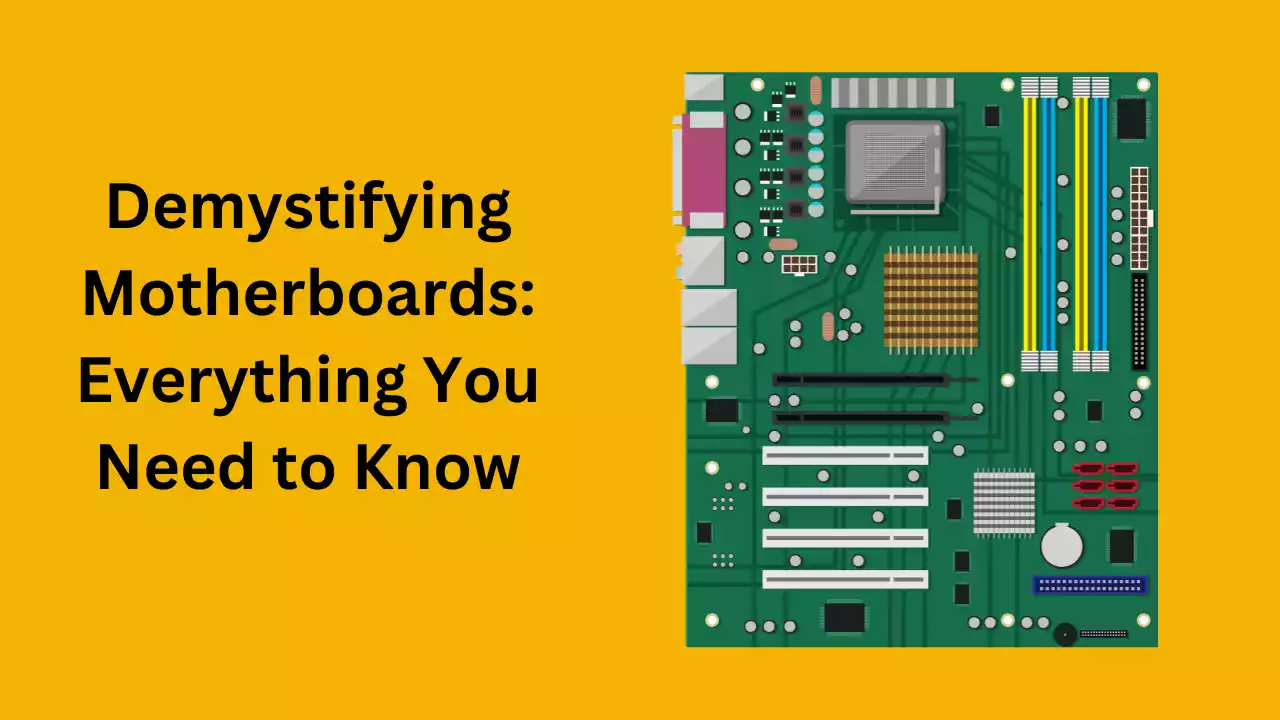In the intricate world of computers, the motherboard stands as the cornerstone upon which all components connect and collaborate. Often referred to as the backbone of a PC, the motherboard plays a pivotal role in determining the performance, compatibility, and functionality of your system. However, for many, it remains a mysterious entity, obscured by technical jargon and complex circuitry. In this comprehensive guide, we embark on a journey to demystify motherboards, unraveling their intricacies and shedding light on everything you need to know about these fundamental components.

Understanding the Anatomy
At its essence, a motherboard is a large printed circuit board (PCB) that serves as the central hub for connecting various hardware components within a computer. It provides the framework for integrating essential elements such as the CPU (Central Processing Unit), RAM (Random Access Memory), GPU (Graphics Processing Unit), storage devices, and expansion cards. To comprehend its anatomy, let’s break down the key components:-
- CPU Socket: This is where the processor, often considered the brain of the computer, is mounted. Different motherboard models support specific CPU socket types, such as Intel’s LGA or AMD’s PGA, each designed for compatibility with respective processor families.
- RAM Slots: Random Access Memory modules are inserted into these slots to provide temporary storage for data that the CPU needs to access quickly. Motherboards can support varying numbers and types of RAM slots, dictating the maximum memory capacity and speed of the system.
- Expansion Slots: These slots allow for the installation of expansion cards such as graphics cards, sound cards, and networking cards, expanding the capabilities of the system. Common slot types include PCI Express (PCIe) and legacy PCI slots, each offering different bandwidths and compatibility.
- Storage Interfaces: Motherboards feature connectors for connecting storage devices like hard disk drives (HDDs), solid-state drives (SSDs), and optical drives. These interfaces, such as SATA and M.2, determine the speed and type of storage devices supported.
- Chipsets: Chipsets act as intermediaries between the CPU, memory, storage, and peripherals, facilitating data transfer and communication between components. They come in two main types: Northbridge and Southbridge, though modern designs integrate these functionalities into a single chip or package.
Understanding Form Factors
Motherboards come in various form factors, which dictate their physical dimensions, layout, and compatibility with PC cases. Common form factors include ATX, Micro-ATX, and Mini-ITX, each catering to different system sizes and requirements. ATX is the standard form factor, offering a balance between expandability and size, while Micro-ATX and Mini-ITX are more compact options suitable for smaller builds or specialized applications.
Choosing the Right Motherboard
Selecting the right motherboard for your build involves considering factors such as CPU compatibility, expansion options, connectivity features, and budget constraints. Whether you’re building a high-performance gaming rig, a workstation for content creation, or a budget-friendly PC for everyday tasks, there’s a motherboard tailored to meet your needs. Researching and comparing specifications, reviews, and user experiences can help you make an informed decision.
Conclusion
The motherboard serves as the bedrock upon which the entire PC ecosystem thrives. By understanding its anatomy, form factors, and selection criteria, you can navigate the vast landscape of motherboards with confidence and clarity. Whether you’re a seasoned enthusiast or a novice builder, unlocking the mysteries of motherboards empowers you to create personalized systems that embody your computing aspirations. So, embrace the journey of exploration, for within the realm of motherboards lies the potential to craft computing marvels limited only by your imagination.